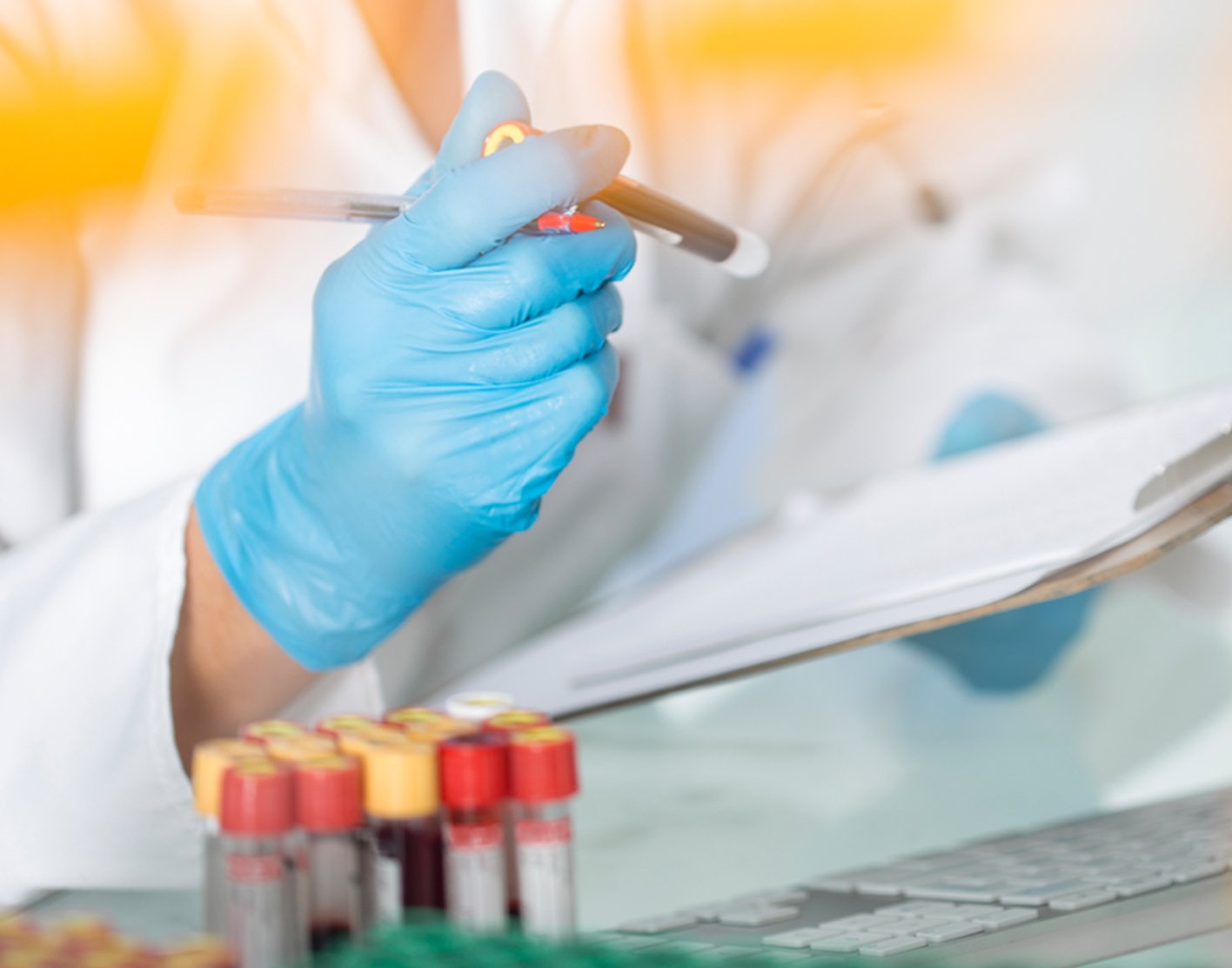
Bilirubin blood test
Definition
The bilirubin blood test measures the level of bilirubin in the blood. Bilirubin is a yellowish pigment found in bile, a fluid made by the liver.
Bilirubin can also be measured with a
Alternative Names
Total bilirubin - blood; Unconjugated bilirubin - blood; Indirect bilirubin - blood; Conjugated bilirubin - blood; Direct bilirubin - blood; Jaundice - bilirubin blood test; Hyperbilirubinemia - bilirubin blood test
How the Test is Performed
A
How to Prepare for the Test
You should not eat or drink for at least 4 hours before the test. Your health care provider may instruct you to stop taking medicines that affect the test.
Many drugs may change the bilirubin level in your blood. Make sure your provider knows which medicines you are taking.
How the Test will Feel
When the needle is inserted to draw blood, some people feel moderate pain. Others feel only a prick or stinging. Afterward, there may be some throbbing or a slight bruise. This soon goes away.
Why the Test is Performed
A small amount of older red blood cells are replaced by new blood cells every day. Bilirubin is left in the blood after these older blood cells are removed. The liver helps break down bilirubin so that it can be removed from the body in the stool.
A level of bilirubin in the blood of 2.0 mg/dL can create
Jaundice is the most common reason to check bilirubin level. The test will likely be ordered when:
- The provider is concerned about a newborn's jaundice (most newborns have some jaundice)
- Jaundice develops in older infants, children, and adults
A bilirubin test is also ordered when the provider suspects a person has liver or gallbladder problems.
Normal Results
It is normal to have some bilirubin in the blood. A normal level is:
- Direct (also called conjugated) bilirubin: less than 0.3 mg/dL (less than 5.1 µmol/L)
- Total bilirubin: 0.1 to 1.2 mg/dL (1.71 to 20.5 µmol/L)
Normal value ranges may vary slightly among different laboratories. Some labs use different measurements or may test different samples. Talk to your provider about the meaning of your specific test results.
What Abnormal Results Mean
In newborns, bilirubin level is higher for the first few days of life. Your child's provider must consider the following when deciding whether your baby's bilirubin level is too high:
- How fast the level has been rising
- Whether the baby was born early
- The baby's age
Jaundice can also occur when more red blood cells than normal are broken down. This can be caused by:
- A blood disorder called
erythroblastosis fetalis - A red blood cell disorder called
hemolytic anemia Transfusion reaction in which red blood cells that were given in a transfusion are destroyed by the person's immune system
The following liver problems may also cause jaundice or a high bilirubin level:
- Scarring of the liver (
cirrhosis ) - Swollen and inflamed liver (
hepatitis ) - Other liver disease
- Disorder in which bilirubin is not processed normally by the liver (for example,
Gilbert disease )
The following problems with gallbladder or bile ducts may cause higher bilirubin levels:
- Abnormal narrowing of the common bile duct (
biliary stricture ) Cancer of the pancreas or gallbladderGallstones
Risks
There is little risk involved with having your blood taken. Veins vary in size from one person to another and from one side of the body to the other. Obtaining a blood sample from some people may be more difficult than from others.
Risks associated with having blood drawn are slight, but may include:
- Excessive bleeding
- Fainting or feeling lightheaded
- Multiple punctures to locate veins
- Hematoma (blood collecting under the skin)
- Infection (a slight risk any time the skin is broken)
References
Daniels L, Khalili M, Goldstein E, Bluth MH, Bowne WB, Pincus MR. Evaluation of liver function. In: McPherson RA, Pincus MR, eds. Henry's Clinical Diagnosis and Management by Laboratory Methods. 24th ed. Philadelphia, PA: Elsevier; 2022:chap 22.
Pratt DS. Liver chemistry and function tests. In: Feldman M, Friedman LS, Brandt LJ, eds. Sleisenger and Fordtran's Gastrointestinal and Liver Disease: Pathophysiology/Diagnosis/Management. 11th ed. Philadelphia, PA: Elsevier; 2021:chap 73.
Review Date: 28/02/2023
The information provided herein should not be used during any medical emergency or for the diagnosis or treatment of any medical condition. A licensed physician should be consulted for diagnosis and treatment of any and all medical conditions. Call 911 for all medical emergencies. Links to other sites are provided for information only -- they do not constitute endorsements of those other sites. Copyright ©2019 A.D.A.M., Inc., as modified by University of California San Francisco. Any duplication or distribution of the information contained herein is strictly prohibited.
Information developed by A.D.A.M., Inc. regarding tests and test results may not directly correspond with information provided by UCSF Health. Please discuss with your doctor any questions or concerns you may have.



























